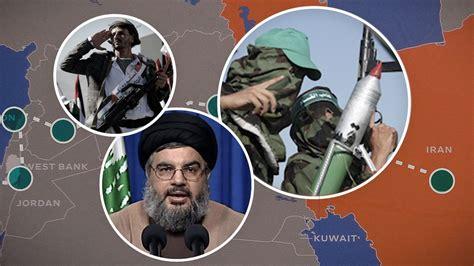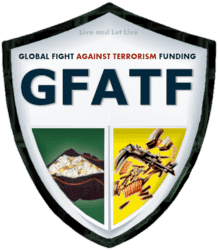
What to Know About Hezbollah, the Lebanese Militant Group
What is Hezbollah?
Hezbollah is a Shiite Muslim militant group formed in the 1980s during the chaos of Lebanon’s long civil war. It was created, with Iranian guidance, to fight the Israeli occupation of southern Lebanon, which ended in 2000. The name Hezbollah (pronounced hez-bo-llah) is Arabic for “Party of God.”
Hezbollah has grown into a powerful political and fighting force in Lebanon, and has expanded its operations into Syria, Iraq, Yemen and elsewhere in the Middle East. It has an extensive infrastructure in Lebanon to support its mission, including offices dedicated to social services, communications and internal security.
Hezbollah and its political allies lost their majority in Lebanon’s Parliament in elections in 2022, but the group remains powerful and it exercises de facto control over parts of the country, including southern Lebanon, which borders northern Israel.
Why are Hezbollah and Israel fighting?
Hezbollah’s military wing has been targeting northern Israel for nearly a year in solidarity with Hamas, the Palestinian group that led the attacks in Israel on Oct. 7 that killed an estimated 1,200 people and sparked a war in Gaza.
Hezbollah began firing rockets at Israel on Oct. 8 to support Hamas. Israel and Hezbollah have been trading fire ever since, calibrating their responses to avoid escalations into a full-fledged war. The conflict has forced more than 160,000 residents in both countries to flee their homes.
Recent attacks have brought the two sides to the brink of their first full-scale war since 2006, when they fought a 34-day conflict that involved an Israeli ground invasion and killed over 1,000 Lebanese and 150 Israelis. The lethality of Israeli strikes this week has surpassed that seen during the 2006 war.
Israeli officials had hoped that by scaling up their attacks over the past week, they would unnerve Hezbollah and convince it to pull farther back from the Israel-Lebanon border.
Who sponsors Hezbollah?
Hezbollah was formed with the support of Iran, and maintains close financial, spiritual and military ties to Tehran. Hezbollah is part of what Iran calls its “Axis of Resistance,” a network of anti-Israel forces that includes Hamas in Gaza and the Houthis in Yemen.
Hezbollah is widely viewed among military analysts as the most powerful and influential of the Iranian proxy groups, and it represents the most serious military threat to Israel. Iran is believed to have supplied Hezbollah with powerful missiles that could strike most Israeli cities. World leaders have been scrambling to prevent an escalation of the fighting between Hezbollah and Israel, fearing an all-out war could draw in Iran and destabilize the region.
Who are Hezbollah’s members?
Since 1992, Hezbollah has been led by Hassan Nasrallah, a cleric who rarely appears publicly for fear of assassination. He replaced the group’s co-founder and previous leader, Abbas al-Musawi, after Israel killed him.
The group is estimated to have between 20,000 and 30,000 fighters. Thousands of them have been battle-hardened in Syria. Hezbollah goes to great lengths to keep the identities of its fighters secret, so much so that they often become known even to their neighbors only when their deaths are announced.
Two of the group’s senior commanders were among those killed in an Israeli airstrike in Beirut last week: Ibrahim Aqeel and Ahmed Wahbi.
U.S. officials wanted Mr. Aqeel for his role in two bombing attacks in 1983 that killed more than 350 people at the U.S. Embassy in Beirut and the U.S. Marine Corps barracks. Mr. Wahbi was a leader of a Hezbollah ambush targeting Israeli naval commandos near the town of Ansariya, in southern Lebanon, in 1997, according to Hezbollah’s obituary. Hezbollah fighters killed about a dozen Israeli officers in that operation.
What are its military capabilities?
After a hugely destructive war in 2006, Hezbollah’s leaders spent years building military capacity in an attempt to counter and deter Israeli attacks.
Hezbollah is estimated to possess tens of thousands of rockets and a smaller number of more sophisticated, precise missiles.
Earlier this month, Israeli special forces carried out a commando raid that destroyed a Hezbollah missile production facility in neighboring Syria, according to American and Western officials.
How does the United States view Hezbollah?
The United States designated Hezbollah a terrorist organization in 1997 and has sanctioned people and companies with ties to the group to try to cut off its funding.
The National Counterterrorism Center cites Hezbollah’s involvement in numerous attacks on Americans around the world, including one on the U.S. Embassy annex in Beirut in 1984, the deadly hijacking of a TWA flight from Athens to Rome in 1985 and a bombing in Saudi Arabia in 1996 that killed 19 U.S. Air Force members.
Amos Hochstein, one of President Biden’s national security advisers, has made at least six trips to Israel and Lebanon since the war in Gaza began last year, and he speaks regularly with Lebanese officials in an effort to stop the conflict from escalating. Mr. Hochstein is the rare American who has been allowed to move freely on Hezbollah turf in Lebanon.
Source: nytimes





